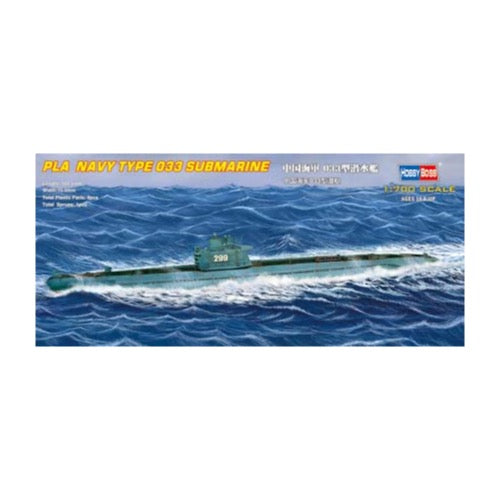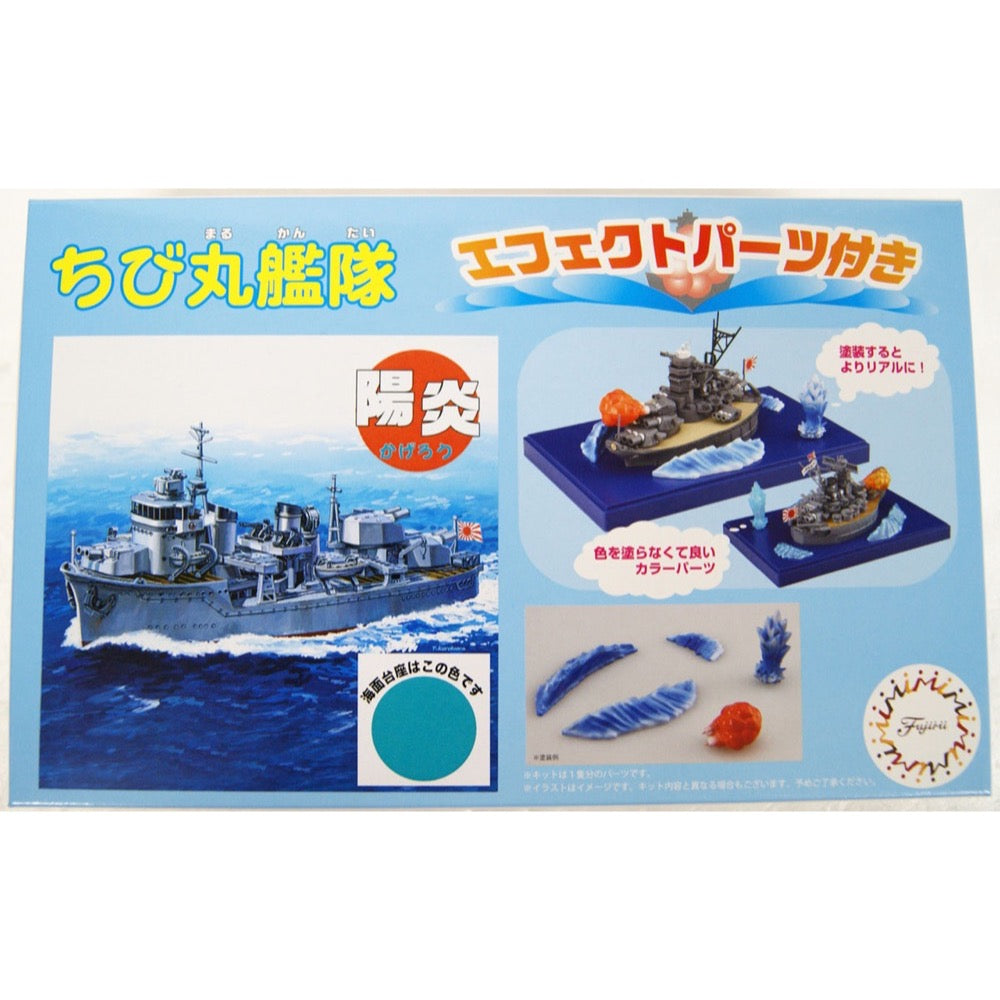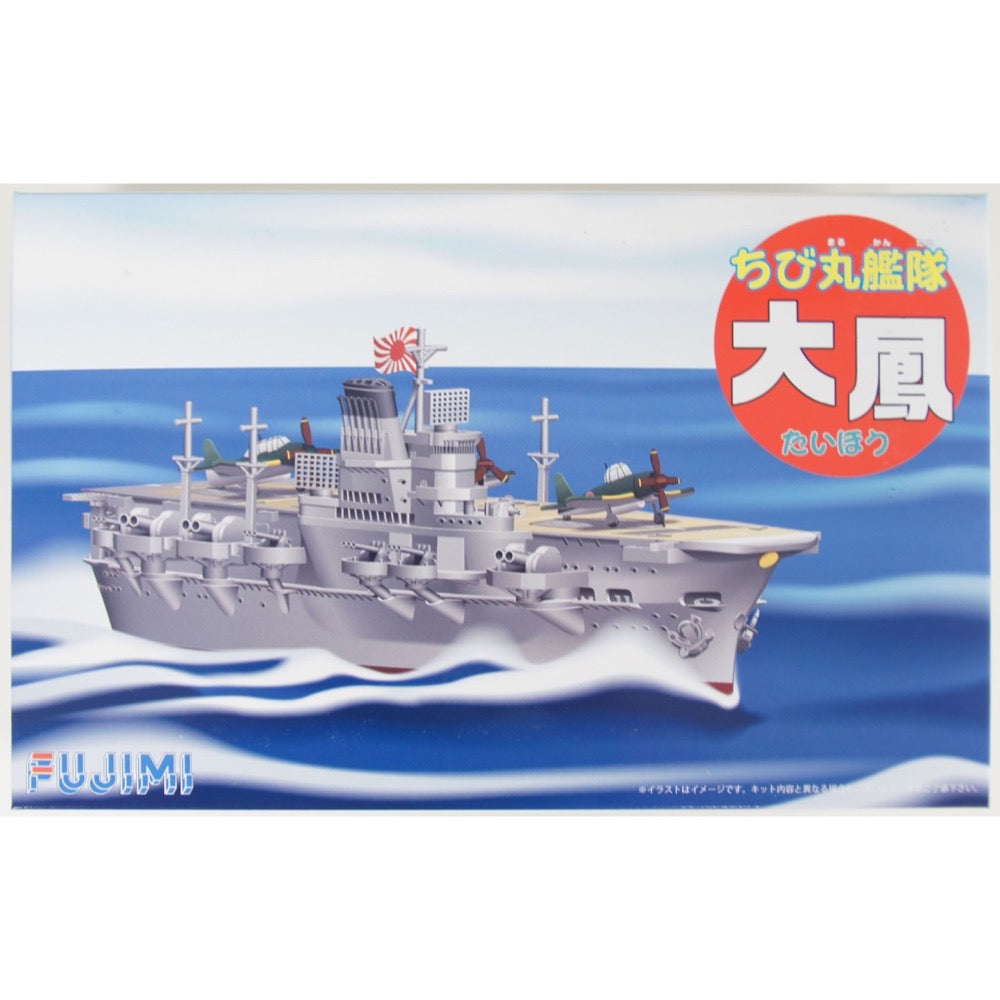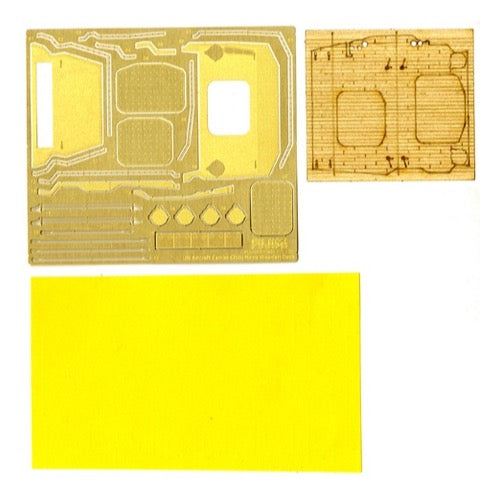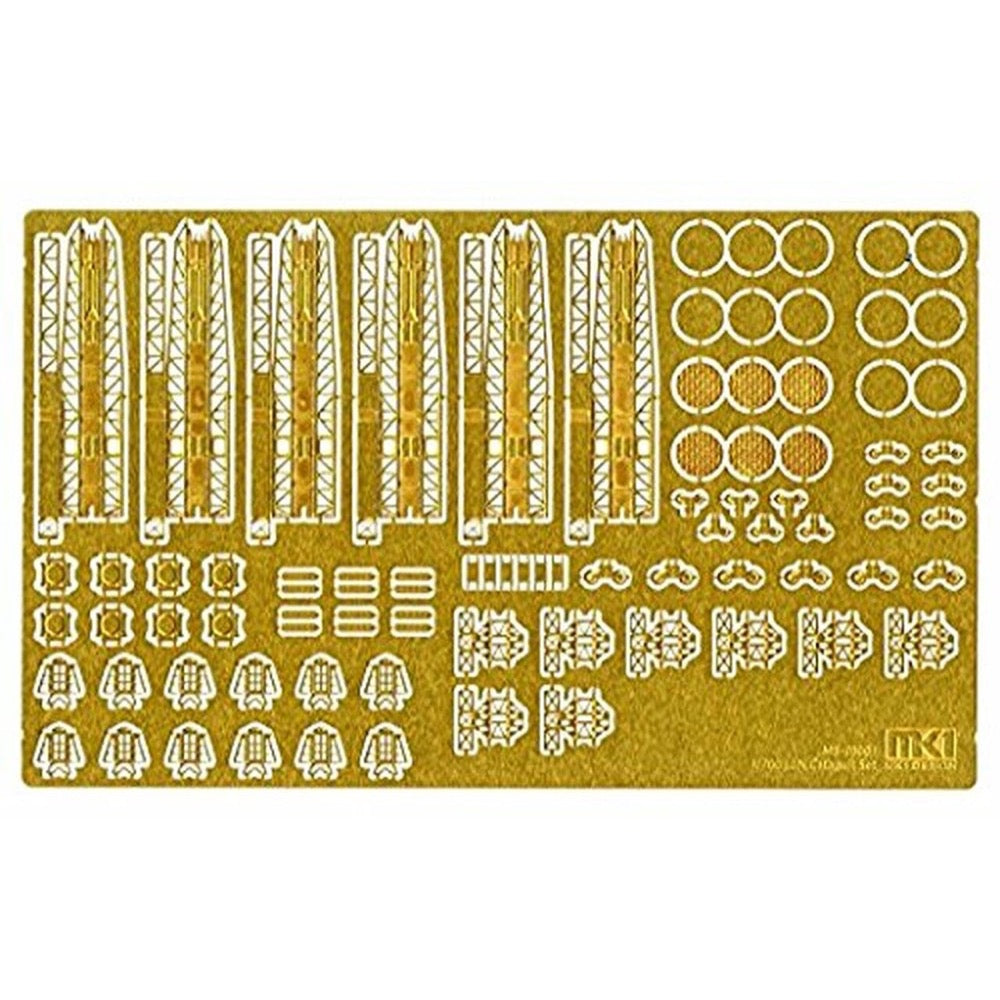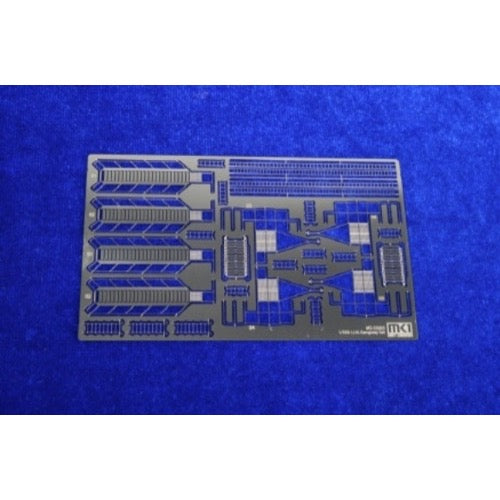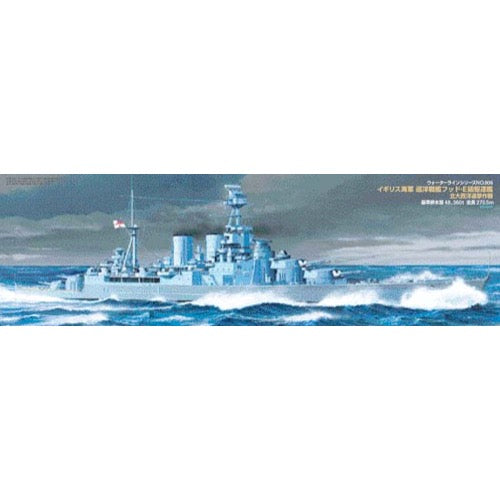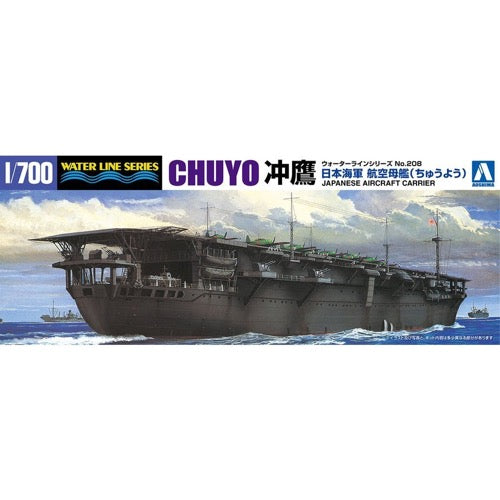
Aoshima A004521 1/700 I.J.N. Aircraft Carrier Chuyo
17.00
$
<p>Chuyo (Japanese: Soaring Hawk) was a Japanese light aircraft carrier, the keel of which was laid in 1938, launched in May 1939, and commissioned in the Imperial Japanese Navy in November 1942. The length of the ship was 180.4 m, width 22.5 m, and a full displacement of 19,800 tons. The maximum speed of the aircraft carrier Chuyo was only around 21 knots, and its main armament was 27 airplanes.</p>
<p>In 1940, with the planned war in the Pacific, the command of the Japanese Navy decided to expand its air force by rebuilding ocean passenger ships under construction or already launched. One of the carriers created in this way was Chuyo - originally the Nitta Maru transatlantic liner. At the beginning of the war, Nitta Maru was confiscated by the fleet and served as a transport unit, but after the catastrophic losses suffered at Midway (the loss of as many as 4 aircraft carriers!), It was decided to convert it into an aircraft carrier. The works lasted from August to November 1942. Due to its low maximum speed and a small air group, it can be classified as an escort aircraft carrier. Chuyo during World War II took a very limited part in combat operations. It served primarily as a training unit and often sailed with its sister ships Taiyo and Unyo. In December 1943, she was sunk by the American submarine USS Sailfish.</p>
<p>This is an injection-plastic ship model kit.</p>
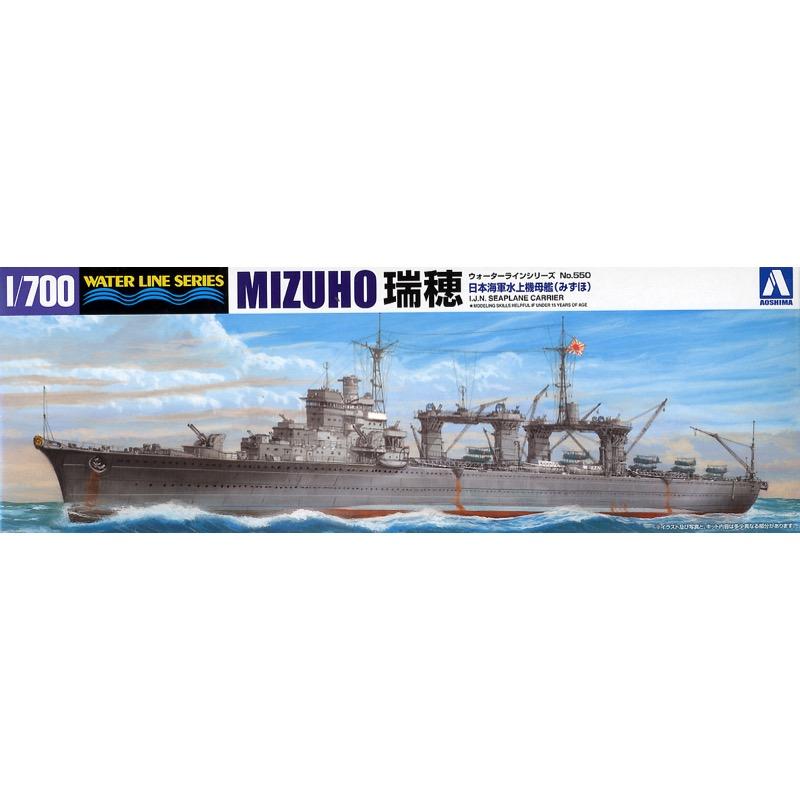
Aoshima A000122 1/700 IJN Seaplane Carrier Mizuho
20.00
$
<p>Highly detailed kit builds into a waterline model.</p>
<p>Mizuho was a seaplane carrier of the Imperial Japanese Navy during World War II. The ship was built at Kawasaki Shipbuilding at Kobe, Japan, and was completed in February 1939.</p>
<p>Mizuho was built to a similar design as the seaplane carrier Chitose, but with slightly less powerful diesel engines instead of Chitose's turbines. She carried 24 seaplanes, and was equipped to carry twelve miniature submarines, although she could not carry full loads of both at one time.</p>
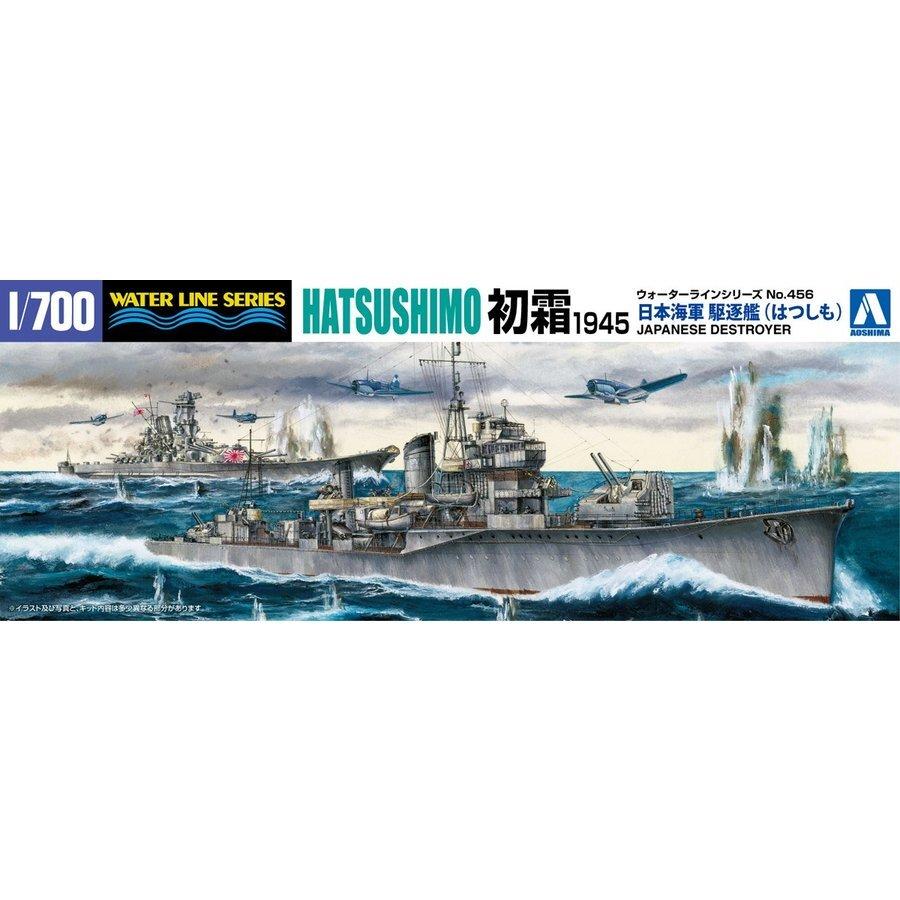
Aoshima A004579 1/700 IJN Destroyer Hatsushimo 1945
10.00
$
<p>Hatsushimo was a Japanese destroyer whose keel was laid in 1933, launched in November 1933, and commissioned in the Imperial Japanese Navy in September 1934. The length of the ship at the time of launching was 109.5 m, width 10 m, and the actual full displacement - 1,800 tons. Destroyer Hatsushimo's top speed was up to 36 knots. The main armament at the time of the launch was 5 127 mm guns in two twin and one single turret, and the secondary armament was two 40 mm cannons, depth charge launchers and nine 610 mm torpedo tubes.</p>
<p>Hatsushimo was the fourth Hatsuharu-class destroyer. Designing destroyers of this type was based on the very successful Fubuki class, but the provisions of the disarmament treaty of 1930 had to be respected, which forced the maximum displacement to be limited to 1,850 tons. The result was a ship with capabilities similar to the Fubuki class, but with weaker torpedo armament. What's more - also on the Hatsuharu type, the ship's stability and the overall strength of the structure had to be improved later. Finally, at the outbreak of the war, units of this type were as good as their Allied counterparts, but had less combat capabilities than the earlier chronological type of Fubuki! Destroyer Hatsushimo began its participation in World War II - in a not very effective way, i.e. by patrolling mother waters in search of American submarines. In January and February 1942, he supported Japanese amphibious operations in the region of the Dutch East Indies. In the summer of 1942, Hatsushimo fought in the Aleutian region, and in March 1943 he took part in the Battle of the Commander Islands. Then he performed a patrol and escort service in the waters of the North Pacific. In April 1944, the ship was modernized: it received a new radar and its anti-aircraft armament was strengthened. In October of the same year, he took part in the Battle of Leyte Bay. In April 1945, he took part in Operation Ten-Go, but was not sunk. The destroyer Hatsushimo sank on July 30, 1945 as a result of hitting a mine.</p>
<p>Aoshima's detailed kit of the IJN Destoyer Hatsushimo builds into a waterline model of the ship as it appeared in 1945. </p>
<p>This is an injection-plastic ship model kit.</p>
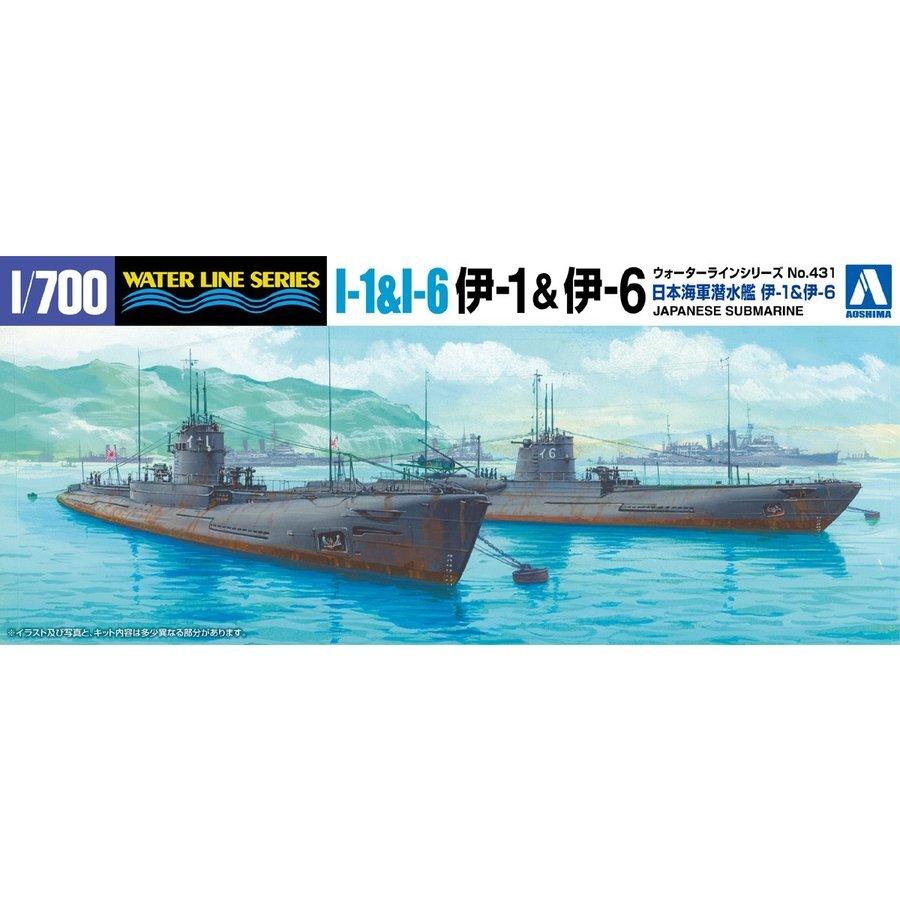
Aoshima A004591 1/700 IJN Submarine I-1 and I-6
7.00
$
<p>The I-1 was a Japanese submarine cruiser that entered service with the Imperial Japanese Navy in March 1926. The length of the ship at the time of launching was 98 m, width 9.1 m, and the underwater displacement - 2,800 tons. The maximum speed of the I-1 on the surface was up to 18 knots. The main armament was six 533 mm torpedo tubes with 14 spare torpedoes, and the secondary armament was two 140 mm guns. I-1 could descend to a maximum depth of 80 meters.</p>
<p>The I-1 was an ocean-going submarine cruiser - the first of four units of the same type as the I-1. Its strong artillery armament - for submarines - predestined it to fight on the surface with enemy merchant ships and enemy light surface ships. Similar design assumptions were also used on other submarines launched in the 1920s and 1930s, including the French Surcouf. Activities during World War II showed that such a concept of using submarines, in view of the rapid development of aviation, turned out to be completely wrong. The I-1 began its combat career in the Pacific War by firing multiple shots at American positions in Hawaii in December 1941. In March 1942, the Dutch transport ship Siantar sank. In August 1942 it was converted into a unit to support the special operations and covert landing of the Japanese marines. Until January 1943, it supported Japanese land-sea operations in the Guadalcanal area. The I-1 was lost by the Japanese fleet on January 29, 1943.</p>
<p>The I-6 was a Japanese submarine whose keel was laid in 1932, launched in March 1934, and commissioned in the Imperial Japanese Navy in 1935. The length of the ship at the time of launching was 98.5 m, width 9 m, and underwater displacement - 3,060 tons. The maximum speed of the I-6 on the surface was up to 20 knots. The main armament was six 533 mm torpedo launchers, and the secondary armament was a single 127 mm gun and one 13.2 mm anti-aircraft machine gun. The ship also took one Yokosuka E6Y1 seaplane on board.</p>
<p>The I-6 was an ocean-going submarine of the Junsen II sub-type, based on the experience and many solutions used on the I-5. Compared to its predecessor, the I-6 differed significantly in the underwater displacement, it was slightly larger, it also had other diesel engines with a much higher maximum power, which had a positive impact on the surface speed of the ship. The immersion depth has also improved (from 75 to 80 meters). The secondary armament was also slightly different. When the war in the Pacific broke out, the I-6 participated in the actions of the Japanese fleet against the base at Pearl Harbor on December 7, 1941. Shortly thereafter, in January 1942, I-6 severely damaged the USS Saratoga aircraft carrier, and in April of the same year it sank two commercial vessels RMS Clan Ross and RMS Bahadar. In the summer of 1942, I-6 was directed to the Aleutów region, but at the beginning of 1943 it was transferred to the South Pacific. The ship was lost as a result of an accident or enemy action on June 30 or early July 1944.</p>
<p>Aoshima's 1/700-scale "Waterline" series model kit of the Japanese Navy special submarine I-400, known as a secret weapon of the Japanese Navy, has been renewed with more precision! The parts structure is simple and easy to assemble for accurate reproduction; newly designed weapons such as a 25mm triple machine gun have been added. Some of the parts are slide-molded for density and precision; in addition to armaments such as destroyer main guns and machine guns, carrier-based aircraft and various equipment have been updated. The outfitting parts (Type 96 25mm triple machine gun and 40-caliber 14cm single gun) have been renewed with new molds.</p>
<p>This is an injection-plastic ship model kit.</p>


